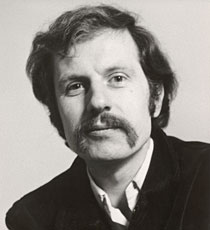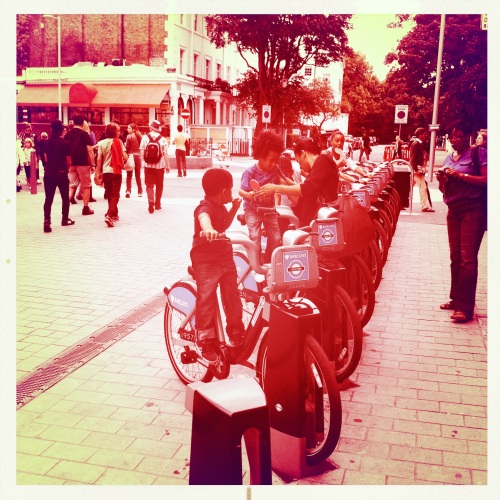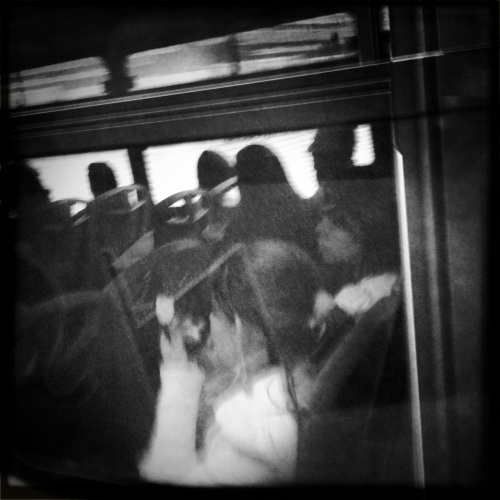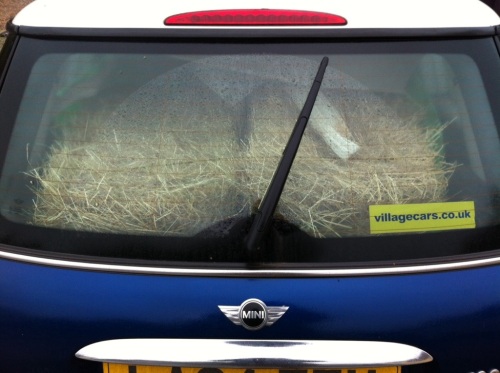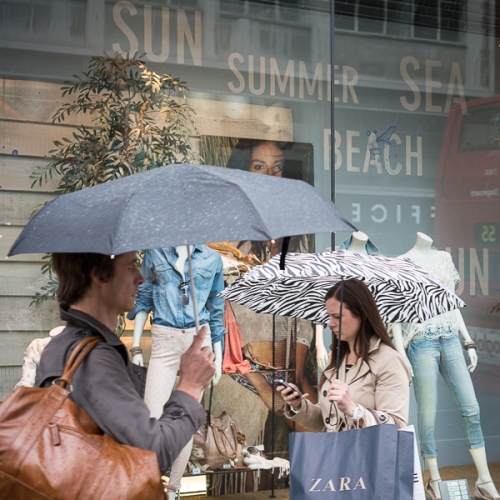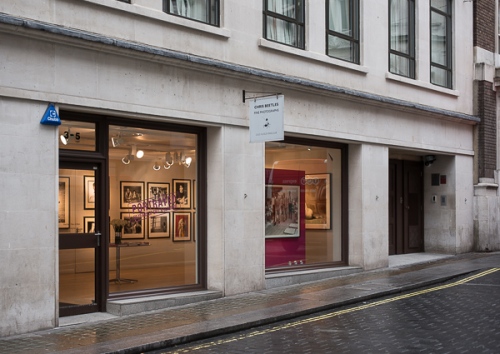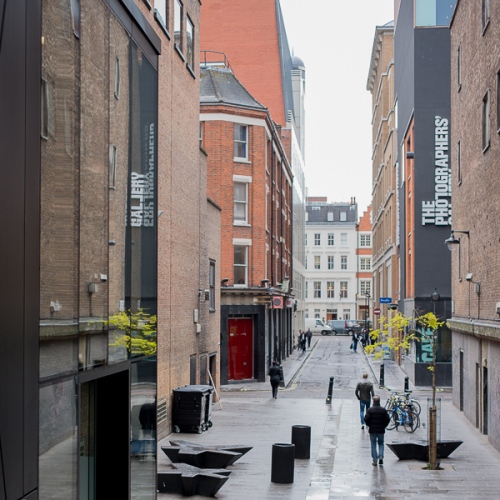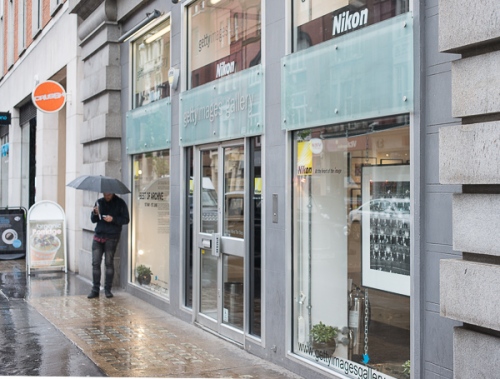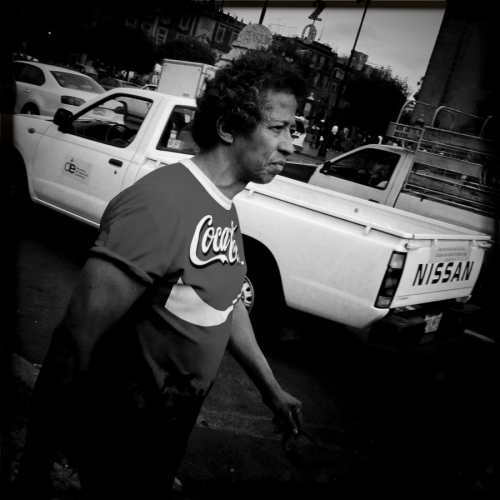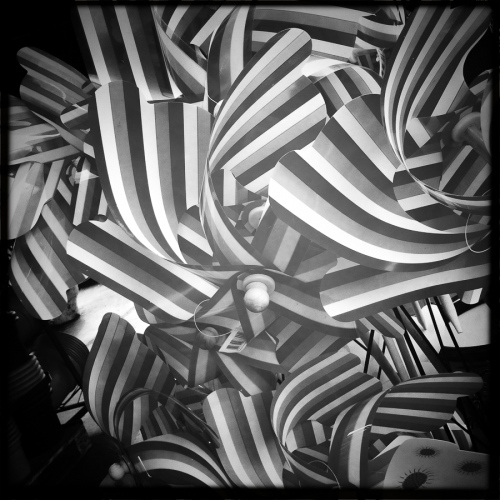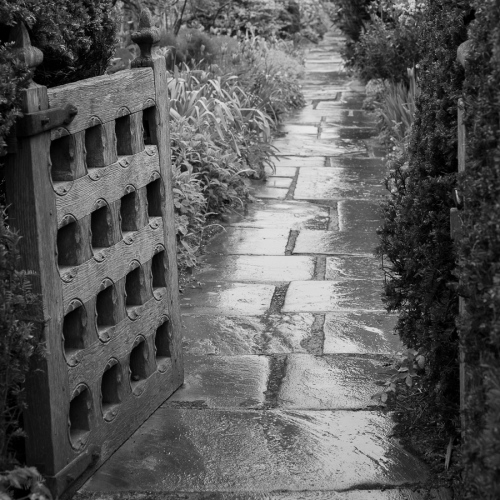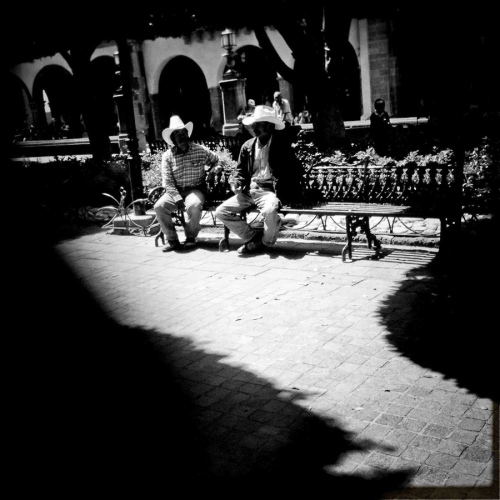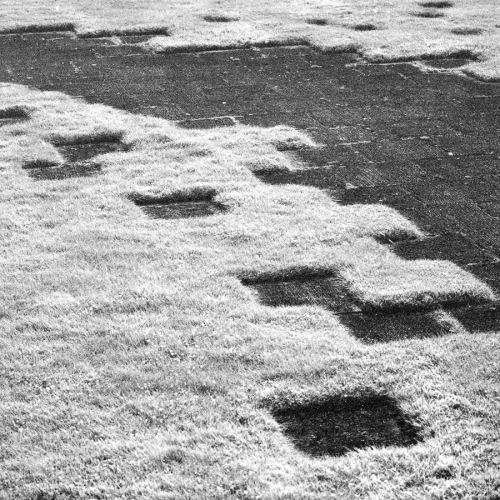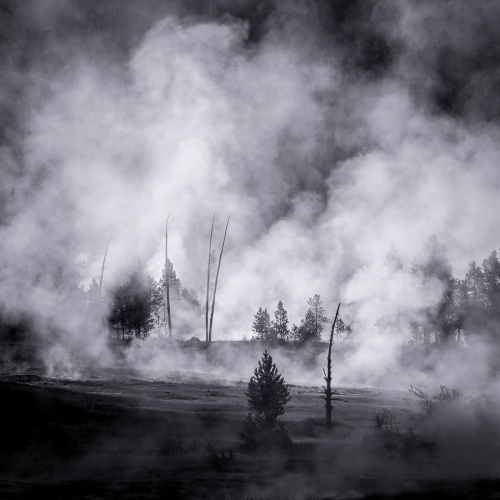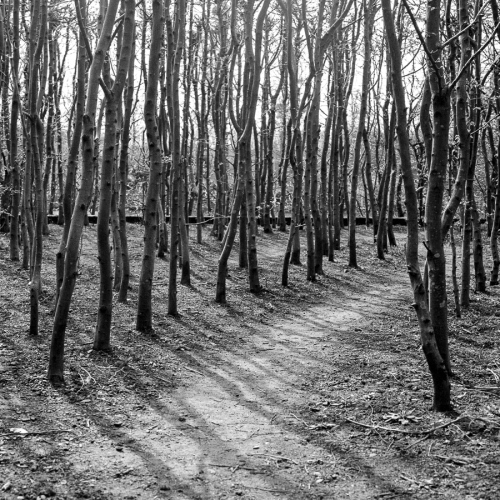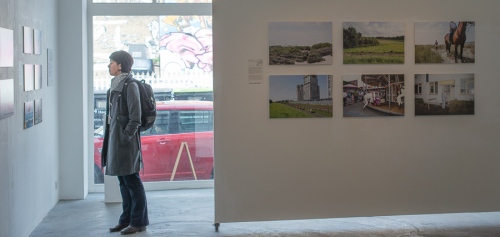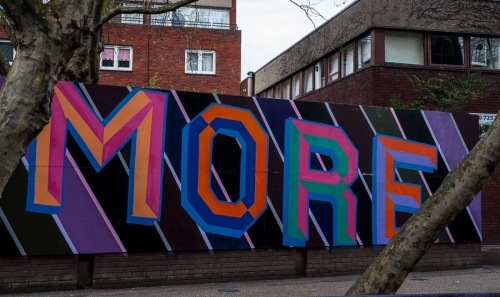
The spacious and underwhelming entrance to Media Space at London’s Science Museum. Media Space is next to a cafe, which has the potential to provide a social space for photographic gatherings and possibly fringe exhibitions. That thought might be a bit radical though, given their archaic attitude to taking photos within the exhibition – as regular readers of my blog will know, galleries that ban photography in photographic exhibitions are one of my pet hates, and now I can add Media Space to the list of offenders! (for copyright reasons, according to the entry staff).
Media Space is a new 500m² gallery within London’s Science Museum – more details. The Science Museum also runs the National Media Museum (NMM), which houses the UK’s premier collection of historic photographs and photographic technology. The NMM is located in Bradford, about 325km (200 miles) north of London. Unfortunately the NMM sits in isolation photographically speaking. It would be great if it had acted as a nexus for other permanent photographic activities but this hasn’t happened. London is really the place in the UK for photographic exhibitions and galleries, though of course there are significant periodic events in places like Brighton and Derby. And, of course, there is the rising consumption of images on-screen and on-line to add into the risk factors to consider when exhibiting physical photographic prints. Now, finally, the museum has bowed to the (almost) inevitable and created Media Space so that the NMM’s collections can be better appreciated. Hooray for that!
Only in England
The inaugural exhibition is drawn from the work of Tony Ray-Jones (1941 – 1972). The exhibition also includes early black & white work by Martin Parr and though excellent, I have not included it in this review. At first I was surprised at how small the exhibition was but I was deceived by the clever layout of the dividers used to hang the photos; these hid the full extent of the gallery’s space. When I finally left the exhibition and looked at my watch I realised I had spent 3 very enjoyable hours looking at the images!
Although raised in England, at the age of 19 Tony Ray-Jones (TRJ) won a scholarship to study at Yale University, USA. He took a year out and worked in New York City, then graduated in 1964, photographed in the US before returning to England in 1965. This period in the US was when he honed his personal style, though his notebooks, some pages of which are in the exhibition, indicate that he was raring to photograph not only the British but throughout Europe. Then, in 1971, he returned to the USA to teach in the San Fransisco Art Institute. Shortly after arriving in the US he was diagnosed with leukemia; he came back to Britain for treatment and died on 13 March 1972 at the age of 30.
In 1968 the Institute for Contemporary Arts (ICA) in London held its first photographic show. TRJ’s photos were there and they “…took the British photography community by storm and… …heralded a new departure in photography.” [exhibition poster]. TRJ’s style has no obvious predecessor: although documentary, it goes beyond simply documenting and shows a personal, wryly humorous view but of an outsider looking in. He did admit to being influences by Bill Brandt’s book “The English at Home” (1936), and this made him see the goal of his work to be in book form: “A Day Off” was eventually published posthumously in 1974 by Thames & Hudson.
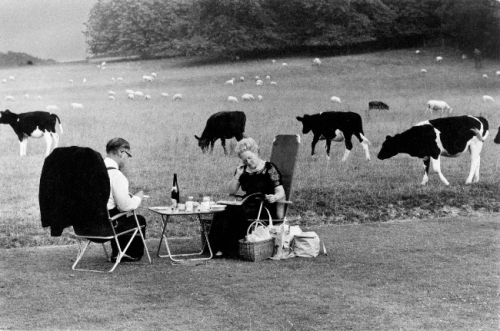
This picture of concert-goers at Glyndebourne uses juxtaposition of disparate elements for its humour, which occurs frequently in TRJ’s images. This image was used on the jacket of his book “A Day Off”. 1974. Image by Tony Ray Jones.
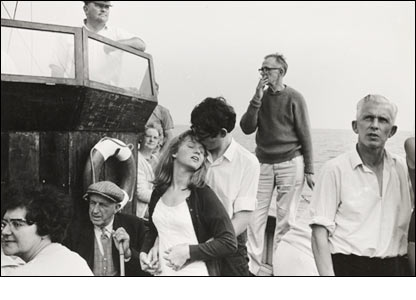
Although our eye is immediately drawn to the central couple, it is typical of TRJ for our curiosity to be engaged about what could be happening out of frame – something that the other people are more concerned about but the couple are oblivious to. Image by Tony Ray Jones.
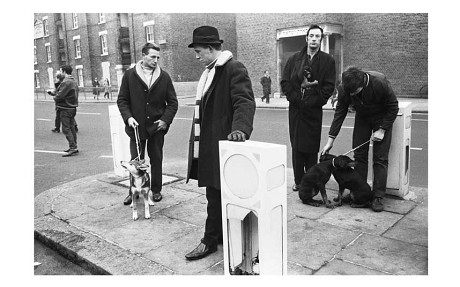
The use of space is of great significance in many TRJ images. Sometimes everyone is crammed together but more often he uses space to separate or group the “actors” in the scene to show 3 or 4 stories at a time. Image by Tony Ray Jones.
The main focus of the exhibition is, rightly, the photographs, but there are extracts from notebooks and a selection of contact sheets that give us an insight into TRJ’s working method. He was a list-maker. Here’s an example:
ON ARRIVING IN TOWNS LOOK FOR
A Central Square
B Old town
C New town
D Poor Quarter
E Rich Quarter
F Suburbs
G Apartment Blocks
H Foreign nationality quarters
I Station cafe pubs
J Town Hall
K Parks or Commons
L Markets
M Library
N Museum
O Bus station
P Factory area (industrial)
Tourist spots
Clubs & Societies
It sounds formulaic but his photographs are anything but. The curator, Greg Hobson and guest curator, Martin Parr, say that they were particularly looking for TRJ’s use of space when selecting the images for the exhibition, and they have certainly managed that. Not only do we see some images with no space and others with lots of it, but we also see images that pushes our interest to the edge of the frame and cleverly use space beyond the rectangle of the photograph: people in the photos are frequently looking beyond the frame, which directs our attention out of the picture and makes us curious about what it is that they are looking at. This makes it easy for us to construct many fictions around the photos, and is a quality that makes it possible to look again and again at many of TRJ’s images without being bored by them. Another notable quality is that none of the people pictured appears to be aware of the camera so TRJ must have had an uncanny ability to blend in with his surroundings and become effectively invisible.
This is an excellent first exhibition in the new Media Space. Given the huge collections held by the National Media Museum there is no shortage of material to display here, I just hope that the finance can be found for it to continue for a long time to come. I also hope that the emphasis will be on the image not the technology – a danger given the nature of the host museum. It is particularly good to see this initiative at a time when museums’ funding is very tight – well done to the Science Museum and NMM!

